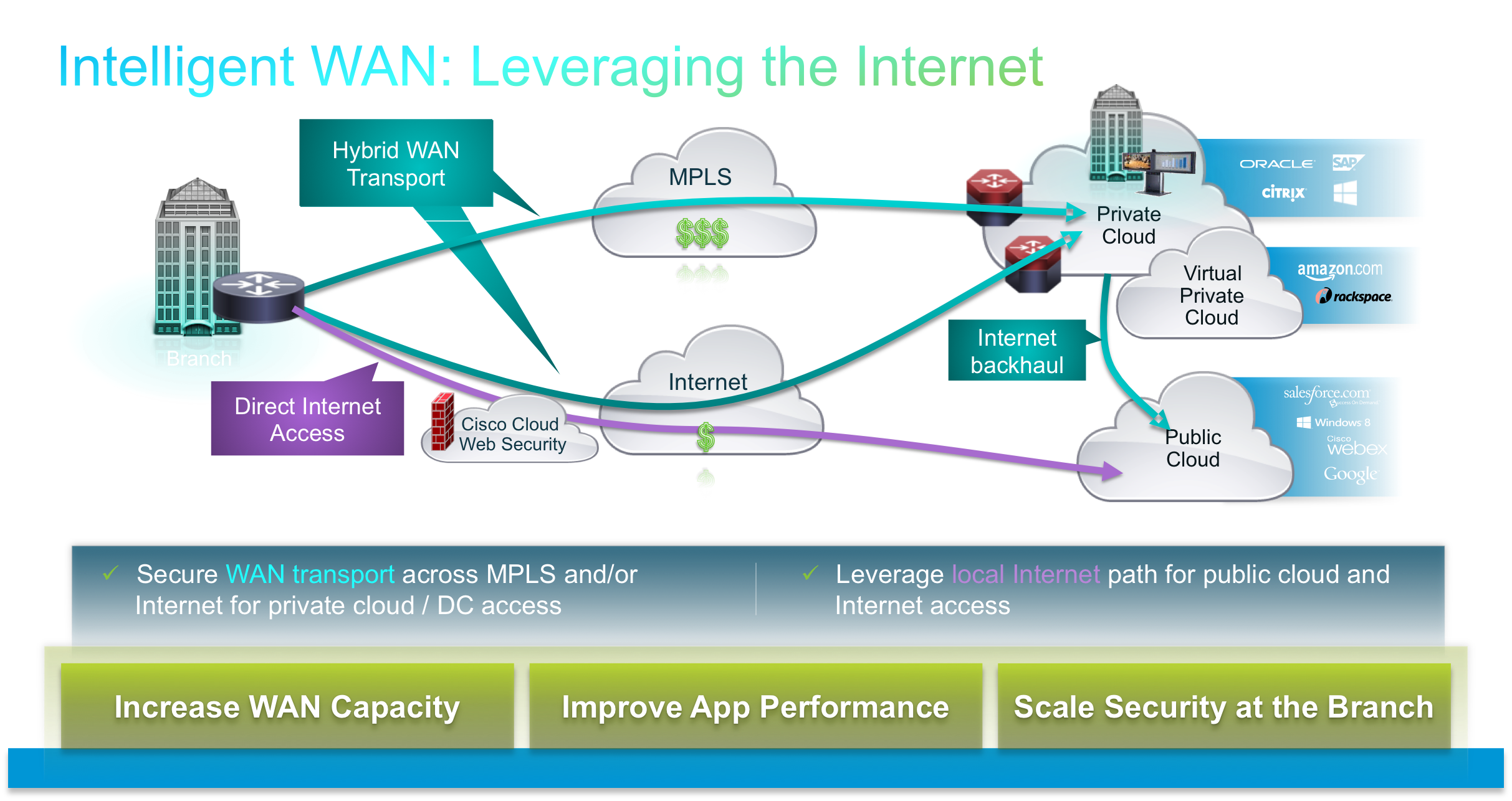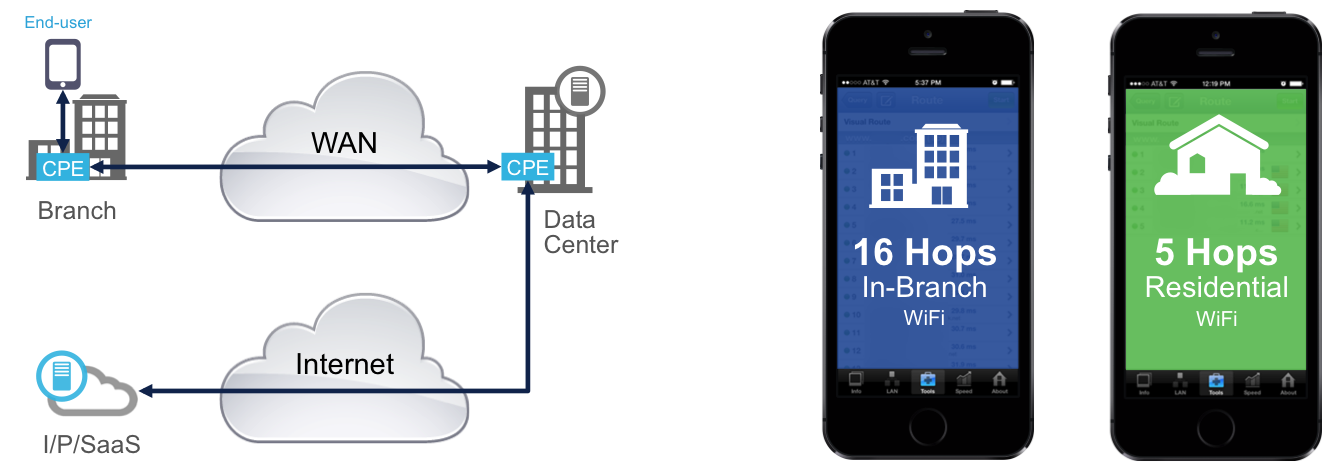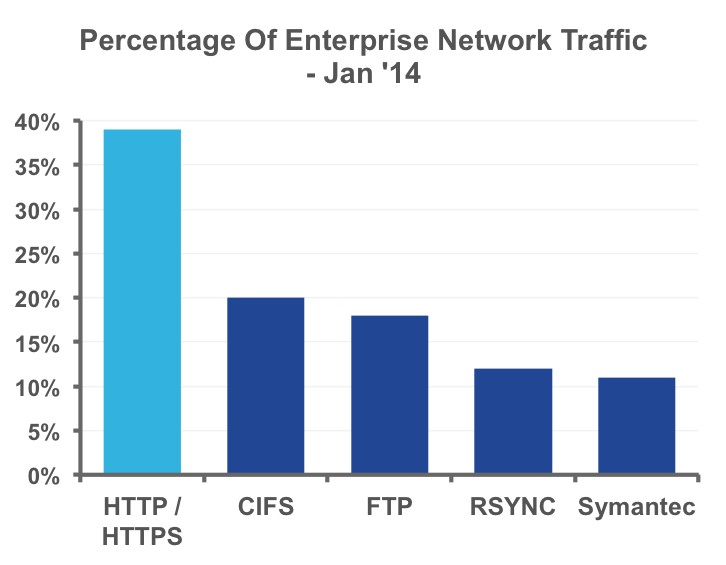Ensuring application experience at the branch is a daunting task. IT must look beyond traditional WAN challenges (like bandwidth, transport type, and speed) to applications experience. As time-to-market becomes a pillar of enterprise’s competitive advantages, application experience is key to ensuring fast service and high customer satisfaction.
In today’s connected world, users demand instant connectivity and seamless experience. As the business innovates, the burden on the WAN intensifies, yet three-fourth (75%) of today enterprises say their bandwidth budget will remain flat[1]. IT knows this, and they plan ahead. They evolve their network into a hybrid WAN (see Figure 1), utilize the latest technologies, but application performance still suffers. Why?

Figure 1: IWAN – Leveraging Internet to achieve a hybrid WAN. For more information on hybrid WAN, check out previous IWAN webinars.
That is because the applications are evolving, and their environments are changing too.
- They’re getting larger. A desktop OS upgrade such as Windows 8 is sized at 3Gb+. An iOS 8 update starts at 1Gb.
- They run in a variety of landscapes. For example, long gone are the days when the only applications deployed at the branch are intranet applications, e.g. ERP systems or Java applications, backhauling to the data center. Now, there are SaaS (Office 365, Salesforce.com, Google Apps), mobile (iOS and Android apps), and real-time web applications (HD video and voice) connecting through VDI or some forms of cloud network – public, private, hybrid.
- They are more opaque as the use of encryption and obfuscation increases.
- They transport through HTTP or HTTPs connection.
What are the impacts? VDI and cloud applications rely heavily on the WAN for speed. A simple email now sends to three different devices: laptop, tablet, and smartphone, consuming 3x the bandwidth (see Figure 2). Yet bandwidth is finite so latency is inevitable. Distance and geography further exacerbates latency resulting in jitter and packet loss. Application performance degradation amplified as the branch takes on these transitions: virtualization, cloud, and the proliferation of devices (BYOD).

Figure 2: BYOD Impact on the WAN
In addition to the above, traditional network architecture that backhauls access to the data center isn’t designed for speed. Typical application access takes 16 hops on in-branch Wi-Fi and 5 hops if on residential Wi-Fi (see Figure 3). Each hop adds delays, which lengthens latency.

Figure 3: Wi-Fi Hops for Typical Application
Furthermore, enterprise network traffic doesn’t consist of TCP, CIF, NFS, or FTP anymore as up to 40% is HTTP/HTTPs now (see Figure 4). This gives rise to new HTTP-based protocols such as HLS, HDS, and HSS that traditional TCP-based WAN Optimization solution cannot read.

Together, these factors create a domino effect causing poor application performance and unsatisfying user experience. An unhappy user translates to unhappy customer, and that impacts profitability. It is not a myth that ensuring application experience is a daunting task.
With Cisco IWAN, doing such daunting tasks is no longer an agony. Cisco customers across verticals tackle application experience with great success using ‘secrets to ensuring Applications Experience in the branch’. On May 27th, Cisco Enabling a Hybrid WAN webinar series will present a session on “Maximizing Application Performance in the Branch.”
Learn
- How to deliver application performance without having to rip-and-replace existing infrastructure
- How Cisco WAAS, a Gartner’s Magix Quadrant Leader in WAN optimization solution, solves applications challenges listed above
Explore
- How to improve the end-user experience in your branch offices
- How to reduce your WAN bandwidth requirements
- How to simplify your branch office footprint by consolidating servers and services
- How to accelerate your data center consolidation, virtualization, and automation initiatives
Live Q& A session is included. For more details and to register, check out our webcast listing here.
[1] Nemertes Research Benchmark Report: Emerging WAN Trends: The Internet Arises


Great overview Kiran – thanks for sharing